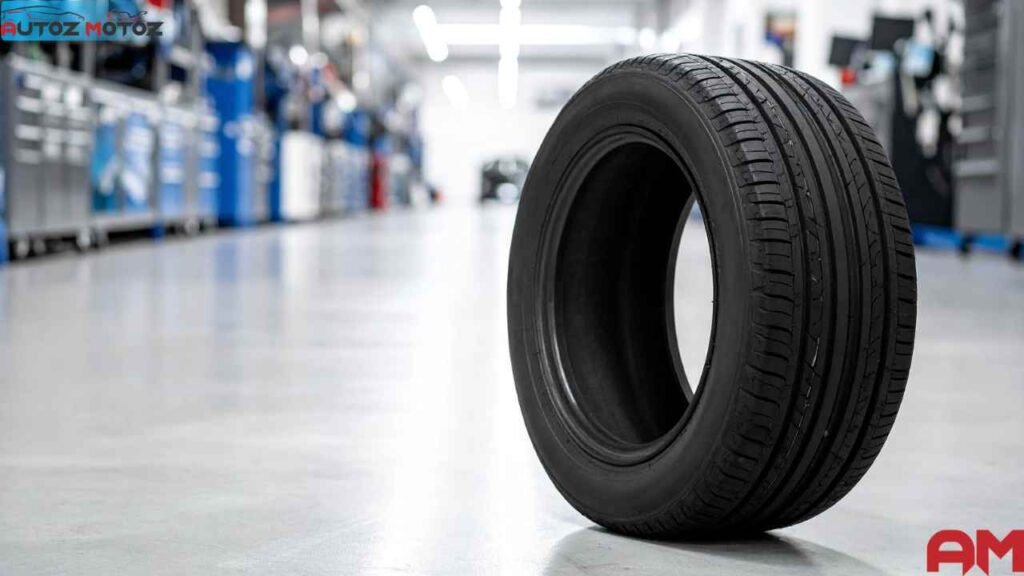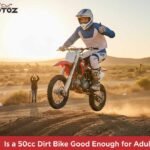Tires are the car’s only contact with the road — tiny rubber parts that determine safety, fuel economy, handling and comfort. Choosing American-made tires today means balancing safety, local manufacturing footprint, seasonal fit, and long-term value. This guide walks you through how U.S. manufacturing fits into the global market, what drivers in different states prefer, and how to pick, install and maintain tires that truly match your needs. (For broader brand context, see the market brand lists and retailer guides.)
Comprehensive Guide to American Tire Technology
Material Innovation and Construction:
• Advanced Rubber Compounds: Specialized polymer blends provide optimal traction and durability across diverse driving conditions.
• Reinforcement Materials: Steel belt construction and nylon cap plies enhance strength and resistance to damage.
• Tread Design: Innovative groove patterns and siping optimize wet traction and noise reduction.
• Sidewall Technology: Reinforced construction resists curb damage and provides enhanced protection.
Performance and Safety Standards:
• Traction Ratings: Uniform Tire Quality Grading (UTQG) ensures standardized performance metrics across brands.
• Speed Ratings: Designated letters indicate maximum safe speed capabilities for various driving scenarios.
• Load Index: Numerical ratings determine maximum weight capacity and vehicle compatibility.
• Safety Testing: Rigorous quality assurance protocols validate performance under extreme conditions.
Cost Effectiveness and Value:
• Price Points: Competitive pricing structures offer excellent value proposition for various budgets. • Longevity: Extended tread life reduces replacement frequency and overall costs.
• Fuel Efficiency: Low rolling resistance designs improve gas mileage and reduce operating expenses.
•Warranty Coverage: Comprehensive protection plans provide financial security and peace of mind.
Weather Compatibility Across States:
• Winter Performance: Specialized rubber compounds maintain flexibility in cold temperatures across Northern states.
• Summer Durability: Heat-resistant formulations perform reliably in desert conditions of Southwestern USA.
• All-Season Adaptability: Universal designs handle moderate weather variations across Midwest and Eastern regions.
• Regional Specialization: State-specific formulations address unique climatic challenges and regulatory requirements.
Registration and Standards Compliance:
• DOT Certification: Department of Transportation approval ensures safety compliance and legal road use.
• Quality Scores: UTQG ratings measure treadwear, traction, and temperature resistance performance.
• Testing Protocols: Standardized evaluation processes validate performance claims and ensure consistency.
• Compliance Monitoring: Ongoing regulatory oversight maintains industry standards and consumer protection.
Compatibility and Pressure Management:
• Vehicle Matching: Comprehensive compatibility guides ensure proper fitment for specific vehicle models.
• Pressure Gauges: Digital and analog tools facilitate accurate pressure monitoring and optimization.
• Inflation Systems: Advanced monitoring technology provides real-time pressure data and alerts.
• Maintenance Tools: Professional-grade equipment ensures proper installation and ongoing care.
Temperature Performance and Export Status:
• Cold Weather: Specialized compounds maintain traction in sub-freezing temperatures and snow conditions.
• Hot Weather: Heat-resistant formulations prevent degradation during extreme summer temperatures and highway driving.
• Export Markets: International certification enables global sales and establishes American quality reputation.
• Global Distribution: Extensive networks facilitate worldwide availability and support services.
Distributor Network:
• Retail Partnerships: Authorized dealers provide local availability and professional installation services.
• Service Centers: Trained technicians offer expert advice and quality installation services.
• Online Platforms: Authorized websites facilitate convenient shopping and delivery options.
• Support Infrastructure: Comprehensive network ensures access to products and services nationwide.
Merits and Demerits
| PROS | CONS |
|---|---|
|
|
Quick industry snapshot
• U.S. tire demand and replacement markets are growing; analysts estimate the U.S. market at ~358 million units in 2024 with modest CAGR through 2033. (IMARC Group)
• The tire industry is concentrated: global leaders (Michelin, Bridgestone, Goodyear, Continental, Pirelli) continue to dominate volume and innovation. (hooperstireoutlet.com)
• U.S. tire manufacturing supports a large economic footprint (plants, jobs, distribution). The U.S. tire sector accounted for an annual economic footprint of around $170.6B and ~291,000 direct jobs (manufacturing, distribution, retail). (ustires.org)
• Major brands still operate U.S. plants (Goodyear has multiple U.S. plant codes/locations) — check DOT plant codes on tires to verify origin. (utires.com)
• U.S. exports/imports of tires fluctuate but remain a meaningful trade item — exports were hundreds of millions USD monthly in recent data. (See trade dashboards for month-to-month shifts.) (Trading Economics)
What matters - when you compare American tires?
Decision criteria: safety ratings / tread life, seasonal performance (summer/winter/all-season), manufacturing origin (DOT plant code), warranty & Treadwear rating, price-to-mileage value, and dealer support.
Top-level brand notes (based on retailer & industry lists):
- Goodyear — broad U.S. presence, many plant codes; strong dealer network. (utires.com)
- Michelin — performance & longevity leader; premium pricing but high mileage & grip. (hooperstireoutlet.com)
- Bridgestone / Firestone — broad portfolio (performance to truck tires). Note: US/NA capacity has shifted recently with some plant rationalizations. (AP News)
- Cooper, Hankook, Toyo, Yokohama — solid mid-tier & specialty choices (all-terrain, truck, budget premium). (hooperstireoutlet.com)
Merits and Demerits
| Brand | Best For | US Manufacturing |
|---|---|---|
| Goodyear | All-season, light truck | Multiple US plants (DOT codes) |
| Michelin | Touring, performance | Some US production; premium |
| Bridgestone / Firestone | Performance, truck | US plants (select lines) |
| Cooper | All-terrain, trucks | US-made options |
| Yokohama / Toyo / Hankook | Performance, budget premium | Selective US/NA plants |
Estimated market-share pie chart (visual)
Goodyear 13.9% | Michelin 11.7% | Bridgestone 9.2% | Firestone 6.5% | BF Goodrich 6.3% | Others 52.4%
I created a simple pie chart of estimated U.S. market share (2025 estimates) using recent public-brand-share figures as a base (these are rounded estimates for content visualization; use official retail/industry reports to cite exact market-share).
based on recent retailer market-share summaries. The chart image was generated and shown in this session — label it in your article as “Estimated market-share — illustrative only; source: industry retail reports.” (Open Brand)
(If you want the raw PNG or an alternate breakdown, I can export it in a format for your CMS.)
Types & Where they fit
All-Season Tires — best for year-round driving in mild climates. Good mileage and low noise.
- Summer / Performance Tires — better grip, handling on warm roads; avoid in cold/snow. (American Tire & Automotive |)
- Winter / Snow Tires — superior traction in snow/ice; essential in northern states with heavy winter conditions.
- All-Terrain / Off-Road — for trucks, SUVs, and mixed pavement/dirt use.
- Touring / Highway — higher-mileage compounds for long-distance comfort.
USA states & consumer preferences
- Northeast & Upper Midwest (NY, PA, MN, WI, MI): winter tires and 4-season all-weather choices are common — safety and winter traction top priorities. (hooperstireoutlet.com)
- Southeast (AL, GA, NC): all-season & performance tires; many manufacturing plants are located in the Southeast and Midwest. (utires.com)
- West Coast (CA, OR, WA): balance between touring/all-season for highways and specialty tires for SUVs.
- Southwest (AZ, TX): heat-resistant compounds, long-life all-season tires favored.
Industry growth & trade
- U.S. unit market reached ~358M tires in 2024; forecasts show modest growth to 2033, driven by replacement demand and fleet growth. (IMARC report) (IMARC Group)
- The U.S. industry has significant economic impact and jobs — manufacturing footprint and plant presence remain strategically important. Expect ongoing reshuffles (plant consolidations or closures) as companies optimize supply chains. (ustires.org)
- Exports/imports: tire exports and imports move with auto production and policy — keep an eye on tariffs and trade policy shifts (these impact price and availability). (Trading Economics)
Budget tiers & typical prices
- Budget: $60–$110 per tire — basic all-season, shorter tread life.
- Mid-range: $110–$180 per tire — better compounds, longer tread life and warranty.
- Premium: $180+ per tire — Michelin, Pirelli, flagship Goodyear lines; best mileage & handling.
(Always compare price per expected mileage and warranty — a cheaper tire with half the mileage can cost more long-run.)
Buying guide (practical, step-by-step)
- Know your driving profile: daily commute, highway, off-road, towing.
- Identify seasonal needs: winter regions → winter tires; mild climates → all-season. (American Tire & Automotive |)
- Check DOT plant code if “made in USA” is important. Use DOT code lookup to confirm plant origin. (Wetherington Law Firm)
- Compare treadwear warranty & ratings (UTQG / treadwear / traction).
- Match load & speed rating to vehicle specifications.
- Get pro installation (balancing, alignment) and keep original receipt/warranty.
Installation & maintenance quick checklist
- Install with professional balancing and wheel alignment.
- Rotate tires every 5,000–7,500 miles (or vehicle manufacturer interval).
- Keep correct tire pressure — check monthly and before long trips.
- Inspect for uneven wear, bulges, or cracks; address issues early.
- Replace before tread depth reaches 2/32” (use the penny test).
Where to find American tire distributors
- Start with brand dealers and national chains (e.g., Goodyear dealers, Tire Rack-style retailers). Local independent stores often stock regionally preferred SKUs.
- Use brand dealer locators and DOT plant codes to check origin. (Your local American Tire & Automotive blog/store network is an example of regional service + distribution.) (American Tire & Automotive)
Maintain The Tire - Proper Utilization
Proper maintenance ensures long-lasting performance and optimal safety from premium automotive tires. Regular care routines preserve traction, handling, and fuel efficiency while extending service life. Simple maintenance practices prevent premature wear, blowouts, and dangerous failures that compromise safety. Professional-grade results require consistent attention to pressure, rotation, and inspection protocols. Neglecting maintenance leads to reduced performance, increased costs, and potentially fatal accidents. Following proper maintenance guidelines maximizes investment value and ensures continued safety throughout extended usage periods.
Maintenance Guidelines:
• Pressure Checks:
Monthly monitoring of tire pressure prevents under-inflation and over-inflation that affects performance.
• Rotation Schedule:
Every 5,000-7,500 miles rotation ensures even wear and maximizes tread life across all tires.
• Visual Inspections:
Weekly visual checks identify nails, cuts, bulges, and tread wear patterns that require attention.
• Alignment Checks:
Annual professional alignment prevents uneven wear and maintains handling characteristics.
• Tread Depth:
Quarterly measurements ensure minimum tread depth of 2/32 inch for safety compliance.
• Seasonal Storage:
Proper storage during winter/summer prevents deterioration and maintains structural integrity.
• Balancing:
Bi-annual balancing prevents vibration and uneven wear that reduces performance.
• Professional Service:
Regular professional inspections identify hidden issues and ensure safety compliance.
Consistent maintenance ensures long-term safety and optimal performance success.
Conclusion
American and U.S.-made tires remain central to driver safety and the national manufacturing ecosystem. For most drivers the best approach is practical: pick a tire that matches seasonal needs and vehicle use, verify manufacturing origin if that matters, balance price vs expected mileage, and get professional installation and routine maintenance. Industry consolidation is ongoing, but trusted brands still deliver reliable options across price tiers. (IMARC Group)
Frequently Asked Questions
Many major brands produce tires in U.S. plants; check the DOT plant code on the sidewall to confirm where a specific tire was manufactured.
American-made tires vary by brand and model, but premium U.S. lines typically offer longer tread life and stronger warranties versus basic budget tires.
For heavy winter conditions choose dedicated winter tires or all-weather rated models with aggressive siping and soft compounds designed for snow and ice traction.
Major U.S.-based brands often provide wide dealer networks and well-documented warranties, making installation, claims, and service more convenient for American buyers.
Yes — several mid-tier U.S. and North American lines offer reliable construction and decent warranties; read reviews and check UTQG ratings before buying.
Professional mounting with proper balancing, regular alignment checks, monthly pressure checks, and scheduled rotations greatly extend tire life and performance.
U.S. tire manufacturing supports thousands of jobs and a sizable economic footprint; buying American-made tires helps support domestic plants and local supply chains.
Tech innovator and business strategist with a foundation in Computer Science and diverse expertise in IT, marketing, and banking. Committed to building disruptive products and customer experiences that shape industries and create global market dominance.









One Response